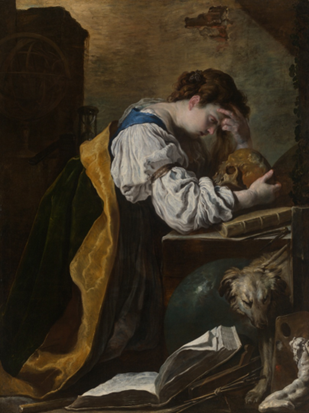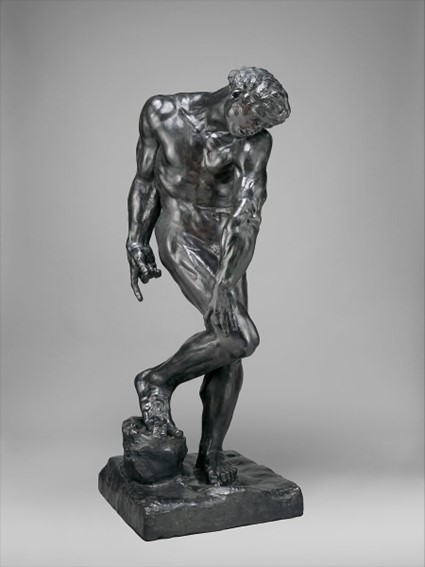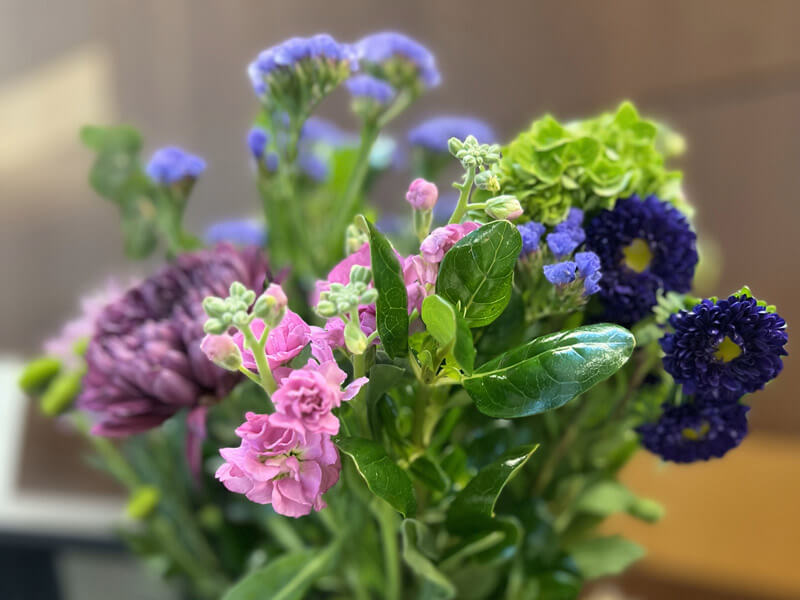Guest blogger Daniel Zheng is a first year medical student at the Johns Hopkins University School of Medicine.
Anatomy dissection holds a sacred position in medical education as an essential rite of passage. Many other moments mark our entrance into a noble profession — donning our white coats, receiving our first stethoscopes. But laying our hands on a cadaver is more than a symbolic gesture: It is a full-contact sport — a physical, intellectual and moral crossing of the Rubicon, the beginning of a physician’s journey. We are brought face to face with death itself, the natural opponent of the healing profession, what we will soon devote our lives to fend off in the care of others. We quickly enter a realm of human experience that few others have encountered, and our brutish experiences will only be understood by the generations before us who have practiced our lonely craft.
I spent the better half of my 20s trying to understand death, avidly consuming the works of physician-writers, French and German existentialists, and was a bit too much a fan of the late-Romantic composer Gustav Mahler, who was haunted by notions of death. I’ve seen patients draw their last breath, families in the trauma unit break down in uncontrollable tears, and the calm descend over the 11th hour as the last rites were read. Even so, I was unsure how I would respond my first time seeing the bodies. Would I feel a sense of sanctity? Or would I break down, overwhelmed by disgust, or even laugh? Was I prepared for this moment to face the unveiling with stoic equanimity … or was that only a feign for my emotional detachedness? As the days went along, I often felt ashamed of myself, that I was somehow missing the “appropriate” reaction to the gravity of our work. But then again, how could someone not feel such a complex range of emotions?
Anatomy lab was entirely different from empty philosophies, biological concepts or the quiet slumber on white sheets in brightly lit hospital rooms — this was death in the flesh. Day by day, I struggled to find what more there was to be learned from the primal experiences being so close to a cadaver. Anatomists speak of the invaluable knowledge and understanding they have gained from the body, but have they gained some deeper truth from reflections in the lab, a greater wisdom of life, perhaps the secret answer to Ives’ unanswered questions? When do we as individuals end as objects, and begin as persons? Is there a soul, and how do we honor it? Was there any honor in what we have done? I hoped to find the answers somewhere in this grey space between beauty and horror, between life and death.

Where death comes to rejoice and teach the living
Many have noted the immense privilege of being an anatomy student. It is an extraordinarily noble sacrifice for individuals to offer themselves to science. To give up one’s body, the most personal and intimate possession we inherit at birth, entirely to the hands of others is a radical decision, taking a drastic leap in faith after death. To donate one’s body is to trust their lives in the hands of the next generation, that their lives served a greater purpose in the education of their sons and daughters — a gesture to the promise of a brighter, wiser, future.
Despite knowing this was their final will, I found it difficult to accept their good graces. Like the unsettling fate of gazelles on Animal Planet, I felt discomfort as I watched these willingly subjected bodies be “consumed” by the domineering machinery of medical knowledge, exploited by the blade of inexperienced medical students. Horror is a valuable human emotion, often signaling some form of moral transgression. Many of my guttural reactions are often washed over and rationalized, “it’s for their own good,” but the ghastly sights and smells were an omnipresent reminder that I could not find the honor in my actions, or the donor’s forgiveness for our trespasses into their deepest recesses.
I vividly recall the care we took during our high school frog dissections, a valuable lesson in life that has stuck with me ever since. Our teacher imparted some bits of wisdom that I have carried with me, an aesthetic way of dissection and the study of life: that one should cut and remove sparingly so that each part could be neatly placed back into the whole, ensuring that we put nothing asunder. These expectations were quickly dispelled. The close shaving of the scalpel was quickly abandoned for the bone saws and gross manual tearing. The delicate regard was abandoned for the brute force needed to bend rigored bodies to access an oblique angle, or the haphazard tearing needed to efficiently clear a field. Much of the body was removed, leaving only a shell of the thoracic cavity which would soon sag and collapse under its own weight. The body was twisted and contorted into such extreme forms, which would amount to torture in any living person, like Rodinian souls trapped in bronze, but there was little beauty in our labor. Our sins were bathed in formaldehyde.

These were the moments when we needed to be entrenched in our work, when these people must be reduced (out of psychic necessity) to fat and sinew, nerves and vessels, to distract us from reality. The humanity of the bodies before us could only be appreciated when we took a step back, but I would first have to confront, and eventually overcome, a persisting visceral dread. Laying in front of us, flesh on stainless steel, was no ordinary thing, a mechanical-biological machine — it was the sublime object.
“The statues are now only stones from which the living soul has flown.”
Hegel, Phenomenology of Spirit
I worked on an elderly female. She was petite, a little overweight, a few scars and a Band-Aid left over on her arm, which was an odd choice to leave intact (something to be said about gallows humor). She was otherwise unremarkable, unidentifiable, just any other body for scientific study.
I was first drawn to her pallid feet peaking beneath the tarp, the heaviest first blow that we were facing the dead. Then her hands. She had a nick on her ear, just like mine, which normally goes unnoticed to others besides people like me who obsess over our figures. Deep-set wrinkles on her forehead. Over the next few months, I would come to intimately know every fold and corner of this person, better than her family, maybe even herself.
During our second week, I grew increasingly frustrated — the groups beside us had finished lab for the day, and we were stuck searching for her right brachiocephalic trunk (which is large enough to be ridiculous to miss). As our patience grew thin, our professor sat down and followed the right subclavian artery into a deep recess and lost his way in the weeds of connective tissue. A miraculous tug traced the vessel straight onto the aorta — she was an anatomical variant missing a fusion of her major arteries, likely having lived through life without noticing any defects. She proved she was different from any of the anatomy textbooks, and I could somehow hear her saying over my shoulder, “See, I told you so!” I like to imagine she was a fighter, that she unapologetically loved herself in every way, that she knew she was born beautifully different (quite literally in her veins) and celebrated herself. Maybe it was her stubbornness that made the rest of lab difficult, wading our way through adipose tissue to find wispy strands of nerves we accidentally split. She must have quipped on her donor card, “I never said I would make it easy for you.”
These excursions gave us the space to step back and find some sense of humanity, in ourselves and our donors. We would have to improvise along the way, through laughter, frustration. They also gave us a glimpse into their lives. Head dissections were difficult. Uncovering her face, I realized she was edentulous. Much of her face and wrinkles had sunken in, and I did not want to imagine what she would look like after we had finished. Surprisingly, it wasn’t the horrific displays that unsettled me. In an otherwise healthy body, peeling back a layer of dense connective tissue revealed an extensive span of small, dense, amorphous lumps, studded across the area. Meningioma.
Even if Hopkins’ very own Bert Vogelstein said “cancer is, in essence, a human disease,” cancer was incredibly ugly in the body — it is anything but human. The brain, the center of our memories, our identities, our emotions, our little quirks, was invaded by this horrible overgrowth, each groove and crevice invaded by malignant cells. I began imagining how much anguish she must have been in toward the end of her life. I wondered if she was still a fighter, or if she still told jokes through her dentures through the headaches, or weakness. Had the cancer grown to debilitate or redefine her golden years, taking over the regions of her brain that made her the very person she was? Thinking about her final months with cancer in that moment, I imagined the infinite ways she could have possibly died or spent her final moments. There was no way for me to embrace her suffering, all the infinitude possibilities of her suffering, and I simply could not bear the weight of it all. That night was the first time I teared up before falling asleep.
On occasions, I would stay late to finish up dissections. By now all my initial feelings of terror had settled, and I was comfortable in this space. Those nights alone held only a serene stillness. I would let her hands rest on mine while I worked on her limbs. When I moved onto her legs, I would brace her foot for support. I thought of the way I held my mother’s calloused and cracked heels. She often asked for foot rubs, one of the few ways we expressed care for each other. Somehow these moments of physical contact felt more lifelike, but I knew the warmth in my palm came from myself. What was missing here in the anatomy lab were the moments of joy, laughter and love in these individuals’ lives. All this time I had only gazed upon death, a colorless statue of her former self, only to forget all the vibrant moments in her life. I wish she were a patient in my care. I could sit beside her, laugh with her through her dentures. That I could hold her hand when she cried, or warmed her feet when she was cold. She was once held as a child, maybe had a pet growing up (she struck me as a dog person). I could have asked about her hopes and dreams, and hopefully some of those came true during her life. Those moments, however, are gone, or more precisely, could never exist. I cannot care for her as if she were a living patient, and so I struggle to care for her in front of me when she is gone. It is a hard reality that what lies before me is an object through which a living spirit has fled. Even so, what lies before me will always be more than a body.
She died of a heart attack.
Unanswered Questions – “Is there life after death”
Mahler asks this question in his “Resurrection” symphony, a 90-minute symphony reflecting on life’s greatest unanswered question. I was lucky enough to attend a live concert halfway through the course, and at the time, felt much like the hero of the first movement, trapped in purgatory torn between an abyss of nothingness and the glimpse of some redeeming beauty. My donor easily came to mind. The question remains: How do we honor the dead?
I first expected some grand revelation on the mysteries of life, and was frustrated to realize there was none to be found, either in the anatomical or the philosophical lessons. Though much of Heidegger’s work is still jargon to me, I agree with him that it is absolutely impossible to learn about our own death through the death of others. Life must be lived, and we must live our own deaths. I could not live through her, but I could only learn to live beside her. Our moments in the lab may appear performative to some, but to me they are an expression for the care we owe each of our patients. There is simply no way for me to repay her for the incredible, selfless sacrifice she has made for my education. Our lives have somehow crossed paths after death through the generous will of her spirit. Some say the honor is in our duty to the practice of medicine, that each sacrifice is not in vain, and we dedicate ourselves to the lifelong learning required to defeat human suffering. Beyond gaining medical knowledge, I have found a deeper relationship with death (and life) through facing the macabre, which will forever shape who I want to become as a physician. My craft lies not in defeating the inevitable, but rather partnering alongside others in the eternal struggle for flourishing until the bitter end … and then some.
I can only hope to honor my anonymous benefactor by carrying her story with me wherever I go, and I only hope she will walk alongside my journey in my now forever-changed life.
The Humanistic Anatomy Group hosts their annual Anatomy Donor Memorial Ceremony on Nov. 9, 2023.
Related Content
- The Anatomy Memorial: A Time to Reflect
- The Human Behind the Body: A Medical Student’s Experience with Cadaveric Dissection
- Anatomy: A Poem
- I’m Alive!
Want to read more from the Johns Hopkins School of Medicine? Subscribe to the Biomedical Odyssey blog and receive new posts directly in your inbox.
